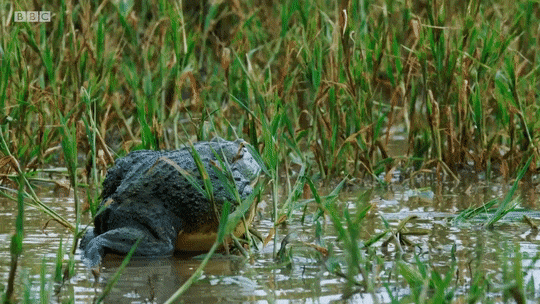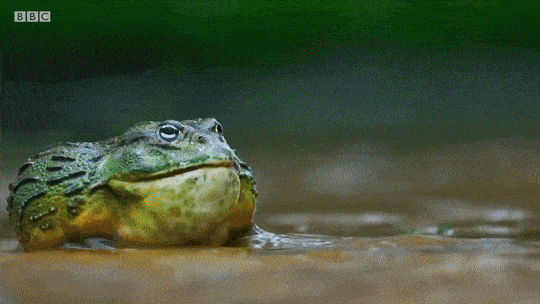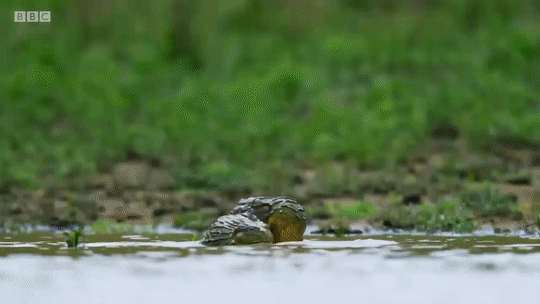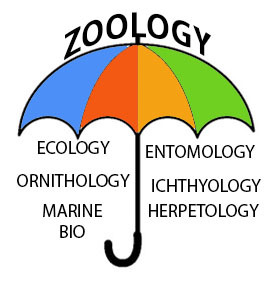#Batrachology
Text

Digenean parasites of frog from Erzurum (a: Diplodiscus subclavatus, b: Dolichosaccus rastellus, c: Gorgoderina vitelliloba, d: Opisthioglyphe ranae, e: Cephalogonimus retusus, f: Gorgodera cygnoides, g: Skrjabinoeces breviansa, h: Haplometra cylindracea, i: Haematoloechus variegatus, j: Skrjabinoeces similis). (Tepe, Yahya & Yilan, Yağmur. (2021). New Records of Trematode and Acanthocephalan Species in Frogs in Erzurum Province, Turkey. Helminthologia. 58. 372-384. 10.2478/helm-2021-0043.)
55 notes
·
View notes
Text

Pine Barrens tree frog
#Dryophytes andersonii#new world tree frog#tree frog#pine barrens tree frog#pine barrens#wikipedia#wikipedia pictures#nature#animals#frogs#frogcore#frogblr#amphibia#amphibians#anura#hylidae#frog#frogs and toads#froggy#zoology#batrachology#herpetology#herpblr#herp#herpetofauna
74 notes
·
View notes
Text
from lots of googling, i have determined this is the cutest frog angle for pictures

limnonectes palavanensis -- guardian frog -- carries his tadpoles on his back from their hatch site to the water they'll turn to frogs in

a fantastic dad, just covered in babies
#limnonectes palavanensis#herpetology#batrachology#caecilian#frog#dad frog#paternal care#this frog is a better dad than most human dads#guardian frog#i love you goodnight
3 notes
·
View notes
Text



Some ADF studies
#.art#illustration#pencil drawing#ADF#african dwarf frog#african dwarf frogs#aquatic frogs#frogs#batrachology
1 note
·
View note
Text

Tadpole doodle from a rejected tattoo design 🐸
Uncolored under the cut
————

#mq doodles#art#illustration#digital art#frog#tadpole#frog art#tadpole art#Batrachology#herpetology#clarification: rejected by me cause I’m designing a tattoo for an OC#going with a different design but this was fun to draw
1 note
·
View note
Text
i call myself a frogologist because there isn't actually a word for someone who studies frogs, and frogologist sounds cute
batrachology is the study of amphibians, including salamanders, newts and caecilians, but that's not specific to frogs (even though the word comes from the Greek word for frog, but whatever)
if we were to coin a "proper" term, it would probably be anurology, from Anura - the order containing all frogs and toads - but that is an objectively awful word
other contenders include ranalogy - from the Latin rana, meaning frog or bufology - from the Latin bufo, meaning toad, but it can be argued that those terms would only apply to the study of species within the families of Ranidae or Bufonidae (aka 'true frogs' and 'true toads', respectively), and that could cause confusion
so, i just say frogology
#frogology is currently a nonce word#but if enough people catch on it'll become a neologism#it aint the 1800s anymore#we don't have to use greek or latin only#linguistics#etymology#history#herpetology#science#frogoloy
61 notes
·
View notes
Text








Frogbattle 🐸
:v v:
#frogs#frog#memes#african bullfrog#bullfrog#frog battle#frog meme#Batrachology#amphibians#amphibian#Frogbattle#African GIANT bullfrogs#suplex#Sabin train suplex
695 notes
·
View notes
Photo

A simple information diagram of the reproductive biology of caecilians #caecilian #caecilianart #caecilians #caeciliansofinstagram #amphibians #amphibiansofinstagram #scienceart #zoologyart #biologyart #zoology #biology #science #batrachology #amphibiology #amphibianart @amphibiansurvivalalliance @amphibianfoundation @IUCNASG https://www.instagram.com/p/B6w0k_JgVvv/?igshid=1ip5mme4b5jjm
#caecilian#caecilianart#caecilians#caeciliansofinstagram#amphibians#amphibiansofinstagram#scienceart#zoologyart#biologyart#zoology#biology#science#batrachology#amphibiology#amphibianart
0 notes
Link
1 note
·
View note
Note
Hey Alex if you went to college what do you think you'd want to major in
Art? batrachology? Both?
2 notes
·
View notes
Text
from lots of googling, i have determined this is the cutest frog angle for pictures

limnonectes palavanensis -- guardian frog -- carries his tadpoles on his back from their hatch site to the water they'll turn to frogs in

a fantastic dad, just covered in babies
#limnonectes palavanensis#herpetology#batrachology#caecilian#frog#dad frog#paternal care#this frog is a better dad than most human dads#guardian frog#i love you goodnight
0 notes
Text
love via batrachology
by fangirl_squee
Lem received pictures of toads from a mystery texter. Fero sends pictures of toads to an unknown number.
Words: 3548, Chapters: 1/1, Language: English
Fandoms: Friends at the Table (Podcast)
Rating: General Audiences
Warnings: No Archive Warnings Apply
Categories: M/M
Characters: Lem King, Fero Feritas, Devar van der Dawes
Relationships: Fero Feritas/Lem King
Additional Tags: Alternate Universe - Modern Setting, Texting
source http://archiveofourown.org/works/20025868
2 notes
·
View notes
Text
THE ABC’S OF ZOOLOGY: The Branches under zoology.

Zoology is a specific branch of biology, that studies the animal kingdom, derived from the Ancient Greek zōion meaning "animal" and logos, meaning "study", translating to “the study of animals”.
Under zoology there are many branches (specific fields of study) that researchers focus or specialise in. Think of it like the branches of a tree that split or as an umbrella.
Just as biology includes such fields like microbiology, botany, genetics, biochemistry and anatomy, zoology also can be further broken down into specific fields such as; ecology, ornithology, entomology and so on.

Scientists love labeling and breaking things down, hence why there is so many different branches or sub-disciplines. Here are some examples of the branches under zoology, and their definitions.
Taxonomic Sub-Disciplines
ARACHNOLOGY:
Derived from the Ancient Greek arachnē meaning "spider" and logia, meaning "study of", translating to “the study of spiders”.
The scientific study of spiders and other arachnids such as harvestmen, scorpions and pseudoscorpions. Arachnology can be further divided into specific sub-disciplines such as:
acarology – the study of ticks and mites
araneology – the study of spiders
scorpiology – the study of scorpions

ENTOMOLOGY:
Derived from the Ancient Greek entomon meaning "insect" and logia, meaning "study of", translating to “the study of insects”.
The scientific study of species in the class insecta or insects. Entomology can be further divided into specific sub-disciplines such as, but not limited to:
Coleopterology - the study of beetles
Dipterology - the study of flies
Odonatology - the study of dragonflies and damselflies
Lepidopterology - the study of moths and butterflies
Melittology (or Apiology) - the study of bees

HERPETOLOGY:
Derived from the Ancient Greek herpein meaning "to creep" and logia, meaning "study of", translating to “the study of those that creep”.
The scientific study of poililothermic ectothermic tetrapods (herpetofauna) or amphibians and reptiles. Herpetology can be further divided into specific sub-disciplines such as, but not limited to:
Batrachology - the study of amphibians
Ophiology (or Ophidiology) - the study of snakes
Saurology- the study of lizards
Cheloniology (or testudinology) - the study of turtles and tortoises

ICHTHYOLOGY:
Derived from the Ancient Greek ikhthys meaning "fish" and logia, meaning "study of", translating to “the study of fish”.
The scientific study of fish, including the bony fish (Osteichthyes), the cartilaginous fish (Chondrichthyes), and the jawless fish (Agnatha).Ichthyology can be further divided into specific sub-disciplines such as, but not limited to:
Osteichthyology - Study of bony fish
Chondrichthology - Study of cartilaginous fish
Elamobranchology - Study of sharks

MAMMALOGY:
Derived from the Late Latin mammalis meaning "of the breast" and the Ancient Greek logia, meaning "study of".
The scientific study of mammals, Also known as "mastology," "theriology," and "therology”. Mammalogy can be further divided into specific sub-disciplines such as, but not limited to:
Primatology - Study of primates
Cetology - Study of cetaceans
Cynology - The study of canines
Chiropterology - The study of bats

ORNITHOLOGY:
Derived from the Ancient Greek ornis meaning "birds" and logia, meaning "study of", translating to “the study of birds”.
The scientific study of the aves, a class of vertebrates which comprises the birds.

Other Sub-Disciplines
ECOLOGY:
Derived from the Ancient Greek oîkos meaning “environment" and logia, meaning "study of", translating to “the study of the environment”.
The scientific study of the interactions among organisms and their abiotic environment. Ecology includes the study of such things as, but not limited to:
Biodiversity and population distribution
Biomass
interactions such as competition or cooperation between species
relationship between flora and fauna (plants and animals).
Ecosystem processes such as nutrient cycling, water cycle, niche construction, pedogenesis

ETHOLOGY:
Derived from the Ancient Greek ethos meaning “character" and logia, meaning "study of", translating to “the study of animal character”.
The scientific study of animal behaviour, also called behaviourism or animal behaviourism. Ethologists focus on behaviour under natural conditions as an evolutionary adaptive trait, by measuring responses to stimuli or behavioural responses both observed in the wild and under lab conditions. Ethology can be further divided into specific sub-disciplines such as, but not limited to:
Reproductive zoologist
Neurobiologist / cognitive zoologist
Comparative psychology

MORPHOLOGY:
Derived from the Ancient Greek morphé meaning “form" and logia, meaning "study of", translating to “the study of form”.
The scientific study of the form and structure of an animal and the specific structural features of that species such as external appearance or morpology (colour, shape, pattern, ect.) and internal morphology (anatomy). Morphology can be further divided into specific sub-disciplines such as, but not limited to:
Morphometry: Study of the quantitative analysis of shape and size
Neuromorphology: Study of the nervous system
Phenetics: (or taximetrics) Study of classifying organisms based on overall similarity in morphology

PHYLOGENETICS:
Derived from the Ancient Greek phylon meaning “clan, tribe" and genetikós meaning “origin, source, birth”
The scientific study of the evolutionary relationship and history of groups or individual species / populations by means of using methods such as DNA sequencing, morphology or other observable heritable traits. The result of these form phylogenetic trees, diagrams that show the history and relationship of species (like the image below).

408 notes
·
View notes
Text
This user is interested in Batrachology This user is in the Greek alphabet is פֵּא This user's favourite animal is the Nilgai.
0 notes
Text

How to distinguish a caecilian
#indian amphibians#amphibians#animals#art#vertebrae#vertebreaker#caecilian study#caecilians of india#caecilian#caecilians#Eathworm#snake#brahmini snake#Caecilian of tumblr#amphibians of tumblr#animals of tumblr#Vertebrate of tumblr#Amphibia#Batrachology#Amphibiology#Amphibian study
1 note
·
View note
Text
“Island of Marvels” - Madagascar Blog Series #3
01/03/15 – 12.30pm to 5.25pm
Mitsinjo Forest, Andasibe – First day continued – Into the Forest.
Whilst during my first time at the Mitsinjo Breeding facility, I met some members of the team including the team supervisor, Justin Claude Rakotoarisoa, who is well known for guiding Sir David Attenborough around the Mitsinjo Forest and also British actor Martine Clunes, at the time presented the ITV documentary “Martin Clunes: The Lemurs of Madagascar.” We discussed many things, including some of my experiences working within the industry and what I will be doing whilst spending my time here, however one thing that was discussed in great detail is what is performed on a daily basis.
Several technicians work daily, each of them on their allocated sections of the following:
MP7 + Surplus
MP8 + F1
Husbandry Research
Livefood & Culture Maintenance
However, when working with the amphibian livestock, they health check, visually, every single specimen within the collection, that’s well over 800 animals in total. I was pleasantly surprised and also incredibly impressed, as it is not a practice I had encountered before and that is on top of humidifying the exhibits, feeding the specimens on set days and cleaning at least one exhibit from each of the sections.
After a relatively short day at the facility for my first day, Devin and myself started to walk back, stopping at the reception area before hand so I can look at the prices for the Guides and different tours available, and with a moment of spontaneity I decided to try my luck and enter the forest to find the famous Indri Lemur (Indri indri) and more importantly to me, species of Herptile. I had been hearing the siren like calls of the Indri most of the morning, I never thought it would be that easy to hear and also, so close. I decided, much to the shock of the Guide that I would go on the 4-5 hour hike, regardless of me still not having recovered from the flights the previous day.
So, we headed off into the forest, ready to find the wildlife I had dreamt for so long to see. My head was an assortment of different thoughts and my curiosity was peeked. We finally arrived at the forest entrance; I stopped for a moment to admire its utter unspoiled beauty and then carried on. The winding path alone held a fantastic amount of Fauna and Flora, I couldn’t believe what my eyes showed me most of the time, our first encounter was something no bigger than the size of a Mantella species and looked very similar to that of Mantella betsileo, this was a Mantidactylus melanopleura specimen, we looked at it for a bit then decided it was time to move on. Carrying on our hike, the pathway became steeper and steeper and more dense with the foliage surrounding it and out of nowhere the guide suddenly stopped with me almost knocking him over in the process, I apologised and with no words, he simply pointed towards the foliage, I searched and searched scanning the area until a tiny movement gave what he had found away. It was beautiful and entirely marvelous, the most perfect looking Brown-horned Pygmy Chameleon (Brookesia superciliaris) specimen I had ever seen, I grabbed a stick and the animal climbed upon it and I studied it closer. Even though it was not the smallest species of Brookesia, it was still unbelievable how small it was yet has everything it needs to live, a heart, liver, lungs everything… Truly amazing!
At this point the guide ran off into the forest saying that he was going to look for Indri and work out which direction they could possibly be… I wasn’t complaining about being alone though, he left me to watch the Brookesia specimen!
After 10 minutes, he returned pointing me in the direction that was easterly, we carried on making our way through the forest, eager to see more within their natural habitat. Then all of a sudden, we came out off the forest into an open area with an incredibly large pond in the center; with a huge chorus of both Anuran and Invertebrate calls, which literally rang in my ears with how loud it truly was. We were in the Parc des Orchidee (Orchid Park) and the Amphibia were everywhere. The main species of Amphibian I came across though, which is incredibly common within its distribution range is the Madagascan Jumping Frog (Aglyptodactylus madagascariensis) a species I had seen in many different books. This species, the male specimens to be exact, tend to change colour during the breeding season, to a beautiful bright yellow/orange almost like a Canary. We didn’t just come across one of them though, oh no, we must have seen approximately twenty to thirty specimens in total; it was like I had died and gone to my own personal heaven!
After a short while, my time was up and we had to walk back to the entrance of the forest. It truly was an enthralling first time out in the forest, and I simply couldn’t wait to go out again…
Joshua Ralph
(MantellaMan)
#blog#herpetology#batrachology#conservation#frog#anura#amphibia#amphibian#madagascar#mantella#mantellaman#reptilia#reptile#nature#wildlife
2 notes
·
View notes